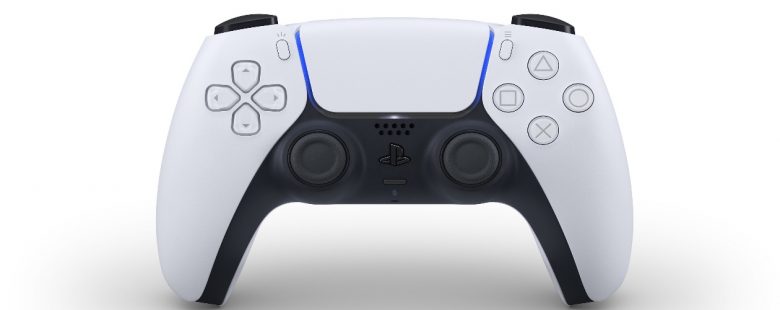One of the most exciting elements of the next generation of console seems likely to come from how you actually interact with the games before you. Sony’s recently revealed DualSense controller seems to be less about shock and more about nuance, with advancements under its plastic shell that embrace haptic feedback and adaptive triggers to add to your immersion in the game.
The specifics of how they’re achieving this won’t truly be known until someone rips one apart for all to see, but that hasn’t stopped speculation from spiralling. The latest rumour came from some misinterpreted gossip, as indie darling spoke about the controller’s haptics and the console’s audio processing in the same sentence, allowing the two to be conflated into “the DualSense will let you feel the weather.”

But here’s the thing: haptic feedback is little more than a catchy buzzword. It’s indicative of a step forward in technology, but the simple fact of the matter is that haptic feedback is a part of the technology that we use every single day that we’re not on a yoga retreat that bans the use of electronic devices. So what does haptic feedback really mean for the DualSense and the future of gaming on PlayStation?
Well, first we need to look at what haptic feedback actually is. While it might sound like a futuristic buzzword, haptic feedback as a term stems from the Greek word ‘haptikos’, meaning ‘able to touch or to grasp’. It’s an incredibly broad term that encompasses a vast amount of our existing interactions with technology.
Even the humble mouse click is a form of haptic feedback, letting you instinctively know that you’ve reached the point at which the device has registered your input, and directly tying in with visual and audio feedback from your computer. When there’s no moving parts and no physical reaction, that’s often nowhere near as intuitive or satisfying. Think of how detached and sluggish supermarket self-checkout and train station ticket machines often feel; a big part of that is their inability to give that physical click – OK, they’re also using rubbish resistive touch screens and crappy low powered hardware, which doesn’t help.
However, just because there’s no outward moving parts doesn’t mean a device can’t give you the sensation that there is one. Ever since the early 2010s, many Android smartphones have used the same motors they use to alert you to phone calls to give a short pulse and vibrate along with inputs on their touchscreen keyboards, giving an abstracted equivalent to using a physical keyboard.

Apple have taken that idea and applied it more literally through what they branded the Taptic Engine. Introduction with the iPhone 6S, this switched the vibration motor technology to Linear Resonant Actuator (LRA) which moves a weight on a single axis instead of spinning something around, letting it give a much more precise form of feedback. Since then, they’ve been able to cut down further on moving parts, so that the Home buttons on their phones, the trackpads on their laptops, their watches all use this to create a simulated click that’s good enough to fool the brain into thinking you’ve clicked a button. Try and click when those devices are turned off though, and you’ll realise they’re solid, unmoving objects.
Such technology has really been refined and miniaturised in recent years, but haptics have been part of our video games since the mid-90s. I am, of course, talking about the humble rumble motor; an Eccentric Rotating Mass (ERM) motor that spins an asymmetrical weight at high speed to give uneven forces and make the device vibrate. The same technology found in most smartphones and older iPhones, a simple buzz of this alongside the sights and sounds of a video game can give you the feedback of a gun firing, or running your race car over the kerbs of a circuit, of getting hit by a red turtle shell.
The earliest uses of this weren’t particularly refined, with a single motor found in the Rumble Pak for the N64 controller, but Sony immediately improved on this by building not one, but two motors into the suitably named DualShock, and positioning them directly in the grips of the controller. Added sensitivity and nuance could be found thanks to the two rumble motors having different sized weights, and being able to spin them at different speeds.
That fundamental form stuck for the better part of two decades, through the PlayStation 2 and PlayStation 3 era, but this current generation saw some meaningful innovation on that front.

Microsoft went first, adding smaller ERM motors to what they branded Impulse Triggers, allowing games to give more directed and sensitive feedback. Now firing a gun can buzz your right trigger finger, while braking and accelerating a car can channel the feedback into different fingers.
The Nintendo Switch Joy-Con also introduced refined haptic feedback in what Nintendo branded HD Rumble. Using an LRA motor, this is sensitive enough to simulate the sensation of balls rolling around inside a tiny box as you tilt the Joy-Con in one of the 1-2-Switch mini-games. It’s superb, but predictably somewhat under-utilised outside of adding refined definition to traditional rumble implementations.

But rumble is only one side to haptic feedback, even in how they’ve appeared in video games over the last few decades. Racing game fans in particular will know of force feedback from the plethora of steering wheel controllers out there. These don’t just rumble in a passive fashion, but impart a direct force back at you through the rotation of the wheel, typically using gears, belts and wheels to pull the wheel back and forth in relation to the action on screen.
It’s worth bearing in mind as Sony talk about their upcoming DualSense controller that all of this is haptic feedback. Whether it’s the click at the end of a button’s range of travel, the pulse of a rumble motor or a racing wheel spinning. When there’s (misleading) stories about being able to feel the rain through the DualSense, you could actually already do that with the Joy-Con’s LRA motors or get approximations of weather through less refined ERM motors.
However, there is meaning to their adoption of haptic feedback in relation to the DualSense: they’re ditching the ERM motors of old and using Voice Coil Actuators. This technology is another type linear vibration motor, similar in function to LRAs, but potentially allowing for another step forward in sensitivity and definition to the vibrations it can produce. This will seemingly let you feel “the slow grittiness of driving a car through mud”.

In one sense, Sony are playing catch up here, finally improving or replacing the vibration motors to match and potentially better those found in their rivals’ hardware. In another, they’re looking for a way to go beyond them, with the potentially transformative adaptive triggers. This element has directly resulted in the chunkier outline of the controller compared to the DualShock 4, letting it change the resistance felt in the triggers on the fly so that you might have to pull harder on the trigger as you pull back on a bow string, as one key example.
Quite how Sony can achieve this we don’t know – Will it use electromagnets? Is it actually the cute robots from the DualShock 4 given a new job? – but this is the true step forward beyond what other controllers are able to achieve, and an impressive accomplishment to miniaturise it and still be effective.
It will be fascinating to see all of this come together for the PlayStation 5, giving the controller a standout new feature that goes beyond what other controllers can do. Now it’s up to developers to make the best use of it. Could you use it to feel the rain? Yeah, probably, but do you really want something so gimmicky like that? Either way, it’s an exciting time as we prepare for the next generation to come pouring from the sky.





